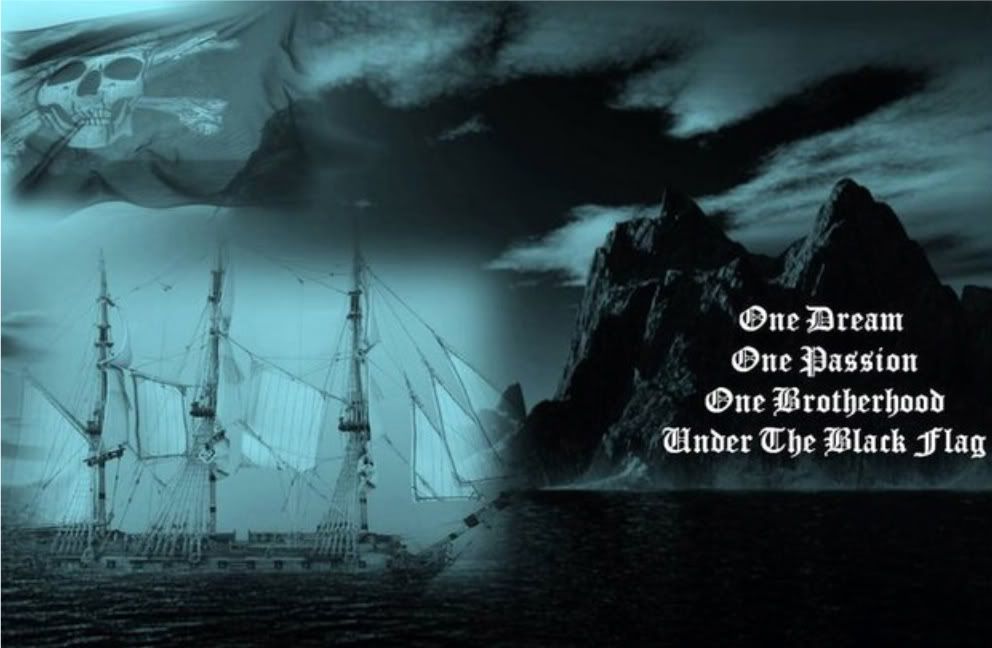Captain Benito de Soto
Captain Benito de Soto, Pirate, pirates 1:57 μ.μ.
Galician slaver turned pirate
De Soto sailed to Africa from Buenos Ayres Brazil in 1827 aboard the Defense de Pedro. Almost as soon as he left port he began plotting to seize vessel and turn pirate. The crew bided its time waiting for the legitimate captain to domost of the work. After picking up a consignment of slaves off the Africa coast, de Soto waited for the ship to reach the deep ocean and then led his co-conspirators in a bloody mutiny. The ship's captain and those loyal to himwere thrown overboard and left to drown. De Soto then took the ship to the West Indies and sold the slaves.
After collecting his profits, de Soto renamed his ship Black Jokeand began to terrorize the waters of the Caribbean.When things began to heat up, he moved to the South Atlantic andcontinued his piratical acts. His actions were always quite brutal,rarely offering his opponents quarter or the option to sign papers andjoin his band.
He became so notorious that ships sailing from South Armerica refusedto sail alone. They would form up in convoys around St. Helena in orderto attempt safe passage.
In 1832 he overtook and East Indian trader named the Morning Star. He killed most of the crew, to include the captain and plundered her of allits cargo. He continued to plunder and pillage his way back toward Spain until his ship met with foul weatherand was found floundering along the rocky coast near Cadiz, Spain.
The crew try to pose as honest sailors when rescued by a passing ship but the booty on board was ample evidence ofwhat their real pursuit was. De Soto, however, was a crafty fellow and managed to evade capture and escaped to Gibraltar.
Unfortunately for de Soto, he arrived in Gibraltar about the same time that the plundered Morning Star arrived in port. He was quickly recognized by a passenger from that ship and tried before the Governor, Sir George Don. Having been found guilty the Governor shipped De Soto off to Cadiz to be hanged along with his crew.
De Soto arrived in Cadiz along with his coffin. A gallows was erectedon one of the docks, as was the custom.The method for hanging was a cruel one. The condemned man would bebrought to the gallows coveyed in a donkey cart and riding atop his owncoffin.Upon arriving he would have the noose placed around his neck and thecart would pull away leaving the pirate to strangle slowly.
De Soto proved himself to be as brave and defiant in death as he was in piracy. Rather than allow somebody to hang him, he stood on top of his coffin and calmly reached for the gallows and adjusted the noose around his neck. He smiled to the gathered crowd and exclaimed "Adios Todos!" (roughly, so long everybody") as he jumped from his cart to his slow painful death.
There is discussion of if De Soto more likely said "Adeus Todos" and not "Adios Todos" The difference being Adeus Todos is Portuguese for so long everyone and Adios Todos is Spanish! However, printed sources such as Gosse's Pirates Who's Who give the quote in Spanish. De Soto was born in Galacia a province of Spain but started his career sailing out of Brazil, a colony of Portugal. So what it comes down to is what language a Spaniard sailing from a Brazilian colony be more apt to speak or would he speak both? We can also assume that if he was adressing Spaniards, so he would speak Spanish. It seems people from both country like to call him one of their own.













